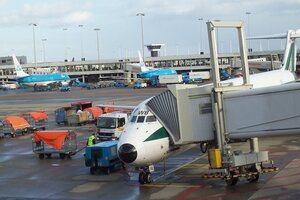
(Zamosc synagogue, 2006. Photo (c) Ruth Ellen Gruber)
The World Monuments Fund has announced four Jewish Heritage Program grants totaling $235,000. The funds go toward renovation, repair and preservation of three synagogues in east-central Europe as well as to preliminary planning for preservation of a former Yeshiva in Belarus.

(Choral Synagogue, Vilnius, 2006. Photo (c) Ruth Ellen Gruber)
$70,000 was awarded to the Choral Synagogue, in Vilnius, Lithuania. Built in 1903, it is the only surviving intact synagogue in Vilnius and still serves the needs of the small Jewish community there.

(Subotica Synagogue. Photo (c) Ruth Ellen Gruber)
The Art Nouveau synagogue in Subotica, Serbia, which has been undergoing fitful renovation for many years, was awarded $75,000. (Restoration of the synagogue has had its ups and downs....which I experienced when I was a board member of the SOS Synagogue foundation formed in 2001 to oversee and encourage the process. Putting in briefly, politics played a role.) Some of the history of the synagogue and restoration attempts can be seen on the S
OS Synagogue web site, which I designed, but which has not been updated for some time.
The 17th-century synagogue in Zamosc, Poland, received $75,000. The Renaissance synagogue, part of the "ideal" planned city, was recently restituted to Jewish ownership after long being used as a library. It is managed by the
Foundation for the Preservation of Jewish Heritage in Poland, which has devised a revitaliation plan for the synagogue that is a centerpiece of its activities. Plans include creation there of a regional Jewish museum.
The Foundation's web site states: "The synagogue in Zamość was erected at the beginning of the 17th century in the late renaissance style. Originally it consisted of only one building. In the 17th century two low porches for women were added to the north and south elevations. The main building of the synagogue is surmounted by an attic, behind which a depressed roof is hidden. The vaults of the synagogue (both in the main hall and in the porches) are richly decorated with stucco work, very similar to the decorations in the main nave of the Zamość church. Both buildings were decorated in approximately same time and in both of them the same type of vault-decoration (the so-called Kalish-Lublin) was applied. In the eastern wall of the synagogue there is a 17th century stone Aron Ha-Kodesz (a niche were the Torah scroll is kept); it’s richly decorated frame is dated for the first half of the 17th century. The synagogue was last renovated during the period 1967-1972. Since that time no major works took place in the synagogue. "
In addition, the WMF granted $15,000 for conditions assessment and conservation planning for the former Volozin Yeshiva in Belarus. Founded in 1803, the Yeshiva was considered the progenitor of the Yeshiva system in eastern Europe. The grants were presented through the WMF's annual Jewish Heritage Program awards.





















































